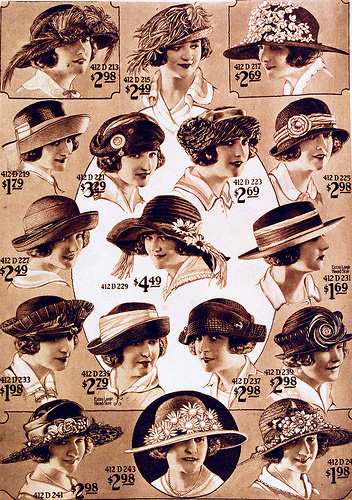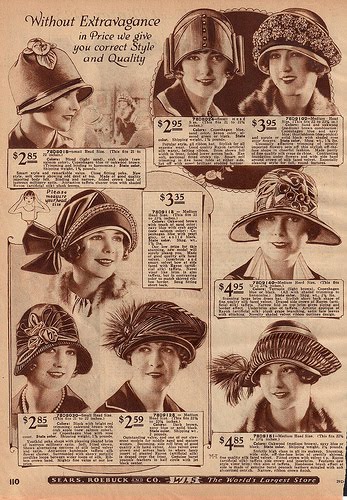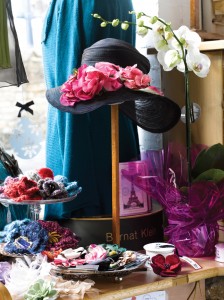
accessories
04 Nov 2011
The History of Hat
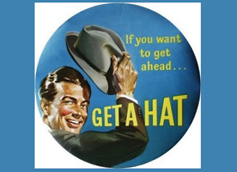 “If you want to get ahead, get a hat” is a famous old saying that describes how popular hat was, especially in the UK.
“If you want to get ahead, get a hat” is a famous old saying that describes how popular hat was, especially in the UK.
According to phrases.org.uk, it was an advertising slogan in the UK in the 1940s, when most men still wore hats, composed by Dunn & Co hatmakers. It implied that, in order to advance in life, you needed a hat to help you on your way.
Even though hats have been so popular in UK, its origin remains unknown. Hats have been found long, long time ago so it is impossible to trace the first man on earth who wore hat. It was created for several reasons but the initial function is to protect the head from bad weather or falling object. Fashion-era.com explains that much of body heat is lost through the head, that’s why a baby needs a head cover when the weather is cold. In telegraph.co.uk ‘s version, the earliest record of hat-wearing comes from a cave at Lussac-les-Châteaux in central France. The rock drawings there are 15,000 years old and people have been putting things on their heads ever since.
According to Hatsuk.com, initially the first hat to be depicted was found in a tomb painting at Thebes showing a man wearing a coolie straw hat. In Indonesia, such style of hat is called as topi caping. Besides the coolie straw hat, Pileus hat or Phrygian cap (hat that looks like Smurf’s hat) is mentioned to be other early hat worn by freed slaves in Greece and Rome.
Later on, hat developed and became the symbol of authority or status. Hat as part of uniform is example how they progressed into symbol of authority status. Some sources mention that it’s the men who wore hats earlier than women. Vintagefashionguild.com mentions that headwear began to be worn by women during Middle Ages when the church decreed the women must cover their hair. The ladies used to cover their head with veil, handkerchief, hood or wimple and they began to wear structured hats as men did in 16th century.
Then in the late 17th century, the style of woman’s hat began to emerge and so did the term milliner evolved in Britain. Formerly, milliner is a fashion stylist yet the creator of women’s costumes, lace, hats and accessories to complete a look. As time goes by, the word milliner now only refers to someone who creates hats for women. While the creator of man’s hat is simply called hatmaker.
Fun Facts About Hats
- Hats are popular in the UK for centuries. Even in 19th century, everyone wore hat including the babies or the elderly people. Only beggars went bareheaded.
- The tall chef’s hat or toque blanche traditionally had 100 pleats to represent the number of ways an egg could be cooked and it’s originally worn by French.
- Since the decorative details of women hats have gone very extravagant, once the hats were decorated not only with feathers but with whole-stuffed bird. No wonder it raised protest from America’s Audobon Society and Britain’s RSPB (Royal Society for The Protection of Birds.
- There’s one particular hat that scared people and cause the inventor to be summoned on the court when he first wore it;
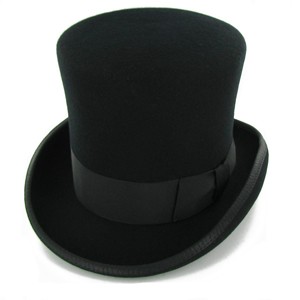 It is the top hat. When I first read the story about top hat, I couldn’t believe it. But I googled it and got many sources telling the same thing, now I’m convinced it’s true. In January 1797, John Hetherington appeared in the streets of London with a top hat. Hetherington had such a tall and shiny construction on his head that it terrified people. The hat was so overstated that various women fainted, children began to cry and dogs started to bark. One child broke his arm among all the chaos. Then he was taken to the court and accused of disturbing public order. Later, this type of hat became popular and is considered acceptable for men.
It is the top hat. When I first read the story about top hat, I couldn’t believe it. But I googled it and got many sources telling the same thing, now I’m convinced it’s true. In January 1797, John Hetherington appeared in the streets of London with a top hat. Hetherington had such a tall and shiny construction on his head that it terrified people. The hat was so overstated that various women fainted, children began to cry and dogs started to bark. One child broke his arm among all the chaos. Then he was taken to the court and accused of disturbing public order. Later, this type of hat became popular and is considered acceptable for men.

